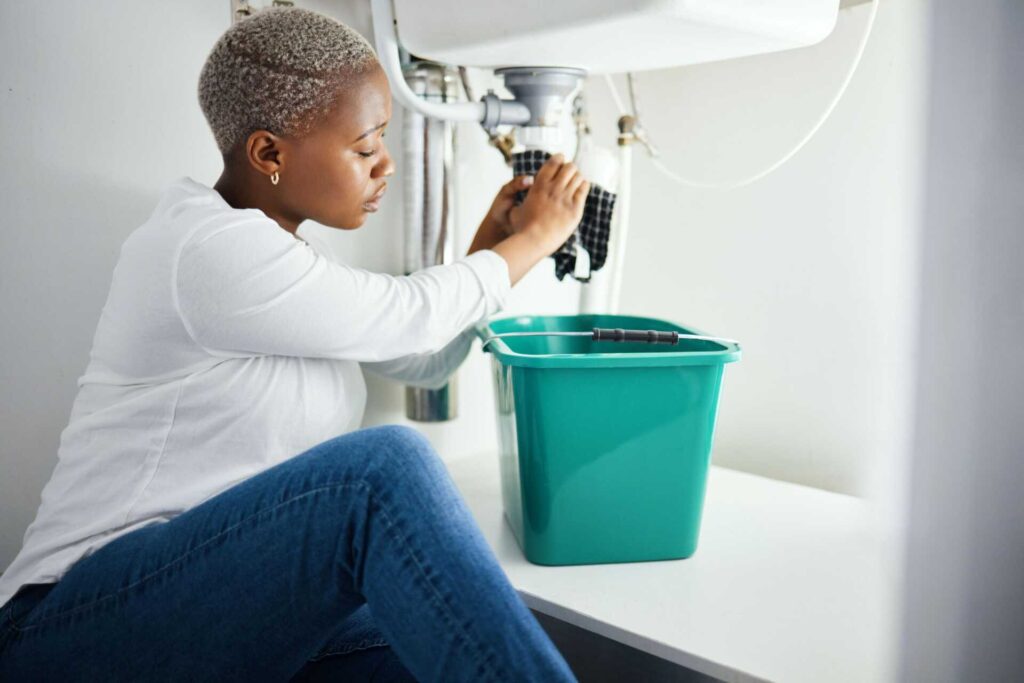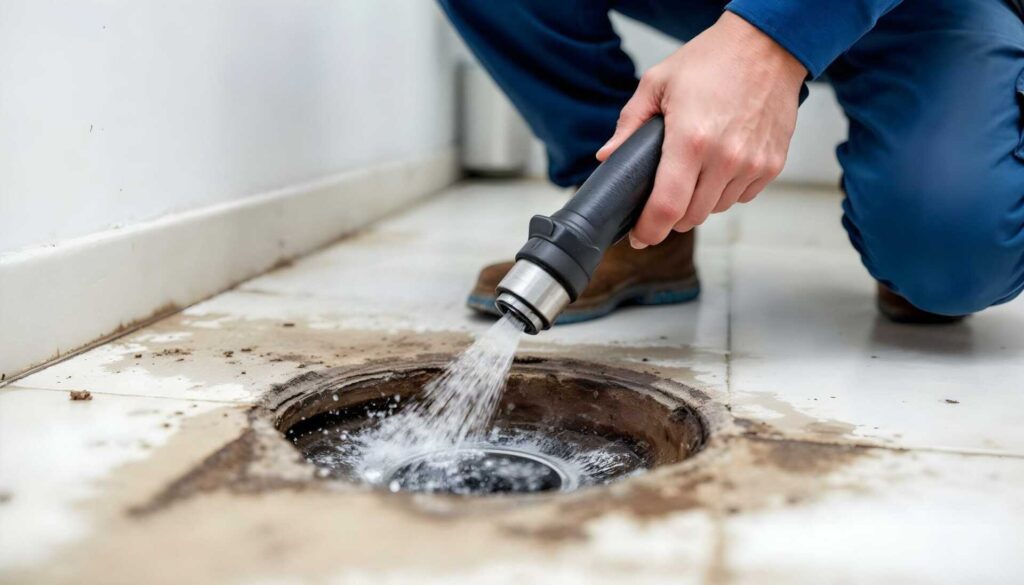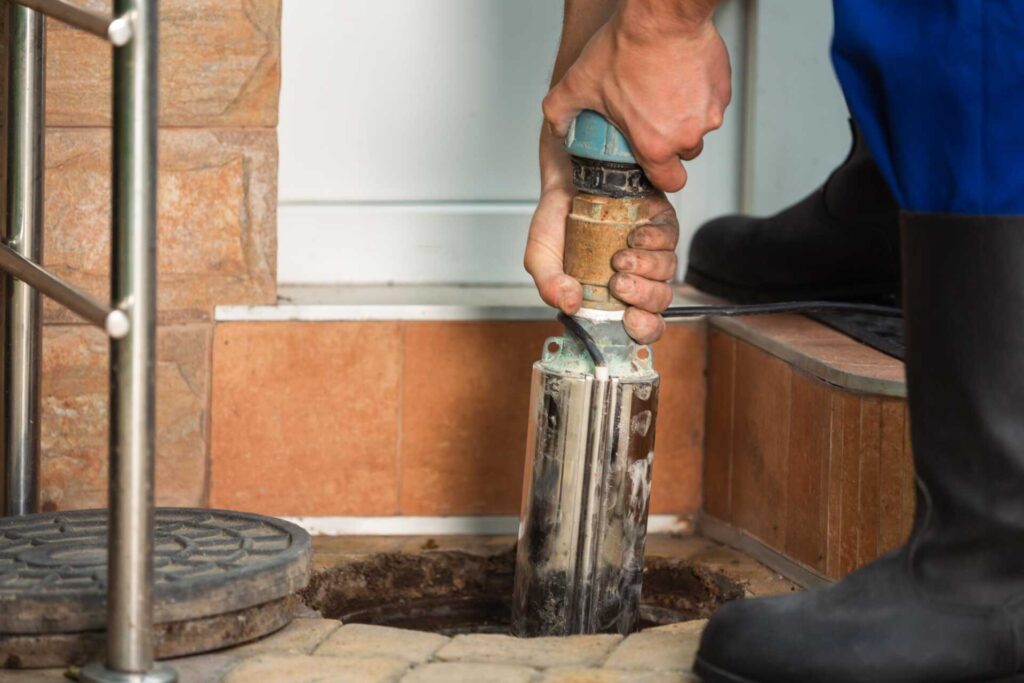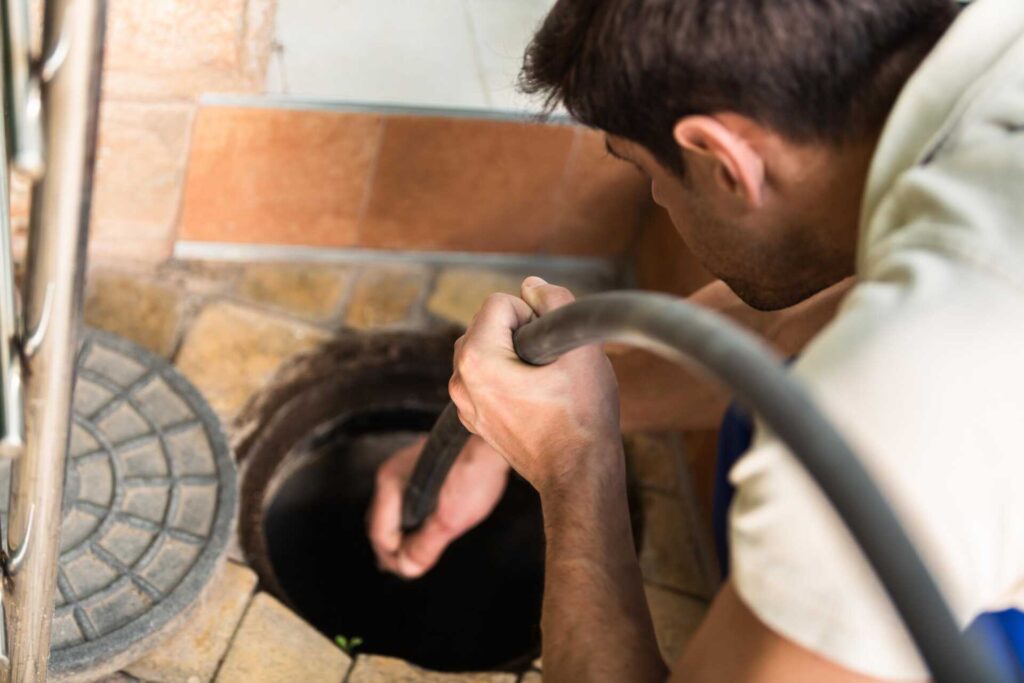
Contents
Did you know most unclogged drains can be resolved without harsh chemicals? You can tackle these issues effectively and safely using techniques that professionals rely on. From simple household items to specialized tools, there are multiple methods at your disposal. Each technique has its advantages and is designed to address specific types of blockages. Curious about which methods will work best for you and how to implement them? Let’s explore these safe, practical solutions that can save you time and hassle.
Key Takeaways
- Use a combination of baking soda and vinegar to naturally dissolve clogs and neutralize odors without harsh chemicals.
- Employ a plunger with the correct type for your drain to create pressure and dislodge blockages effectively.
- Utilize a drain snake to manually break apart stubborn clogs, ensuring to flush with hot water afterward.
- Try a mixture of hot water and dish soap to dissolve grease and debris in the drain easily.
- Regularly maintain drains with enzyme cleaners and monthly hot water flushes to prevent future clogs and build-up.
Boiling Water Method
One effective technique for tackling minor clogs is the boiling water method. This simple yet powerful approach uses the heat from boiling water to increase drain temperature, which can help dissolve soap residue, grease, and other minor obstructions. To start, boil approximately one to two liters of water in a kettle or pot. Make sure you have a steady grip on the vessel, as the water will be extremely hot.
Once the water reaches a rolling boil, carefully pour it directly into the clogged drain. It’s important to do this gradually, allowing the boiling water to work through the blockage. You may notice a change in drainage speed almost immediately as the heat penetrates the clog and loosens debris. If the water drains slowly, wait a few moments and repeat the process.
Remember, this method is best suited for metal pipes, as plastic pipes can be sensitive to high temperatures. If you’re unsure about your piping material, it’s wise to consult a professional. Using boiling water regularly can also serve as a preventative measure, keeping drains clear and minimizing buildup.
Incorporating this technique into your routine makes you feel more empowered in handling minor plumbing issues and fosters a sense of belonging in the community of homeowners who take charge of their maintenance tasks. With just boiling water and a little patience, you’re on your way to ensuring your drains remain unclogged and functional.
Baking Soda and Vinegar
Baking soda and vinegar create a powerful, natural combination for unclogging drains, often yielding impressive results with minimal effort. This method leverages the unique properties of both substances, making it a reliable choice for homeowners who want to tackle clogs without resorting to harsh chemicals.
First, consider the baking soda benefits. It acts as an abrasive and mild alkaline agent, effectively breaking down grease and organic matter that might be causing the blockage. To use this method, start by measuring about half a cup of baking soda and pouring it directly into the drain. Follow this with a similar amount of vinegar, which possesses acidic properties that can dissolve debris and buildup.
When vinegar meets baking soda, a fizzy reaction occurs, producing carbon dioxide and water. This effervescent reaction helps to dislodge stubborn clogs while neutralizing odors in the process. After allowing the mixture to sit for about 30 minutes, flush the drain with hot water to wash away any remaining debris.
It’s important to remember that while this method is effective for minor clogs, it may not resolve all drainage issues. Regular use of baking soda and vinegar can also prevent future blockages, contributing to a healthier plumbing system. Embracing this natural technique enhances your home maintenance skills and promotes a sense of community among those who prioritize eco-friendly solutions.
Plunger Techniques
To effectively clear a clog, it’s essential to choose the right type of plunger for your specific drain. Once you have the appropriate tool, mastering the effective pumping technique will maximize your chances of success. Understanding these aspects will make your unclogging efforts more efficient and less frustrating.
Proper Plunger Types
Choosing the right plunger type is essential for effective drain unclogging. Using the appropriate plunger can greatly enhance your plunger’s effectiveness, ensuring that you tackle the problem efficiently. Here’s a quick guide to help you choose the right one for your needs:
- Cup Plunger: Best for flat surfaces like sinks and tubs. Its design creates a strong seal for effective suction.
- Flange Plunger: Ideal for toilets due to its extended rubber flap. This design fits snugly into the toilet drain, maximizing power.
- Accordion Plunger: Great for tough clogs. Its unique shape increases pressure and can break through stubborn blockages.
- Heavy-Duty Plunger: Perfect for commercial use. Built with a sturdier design, it provides superior suction for larger, more challenging clogs.
Effective Pumping Technique
Once you’ve selected the right plunger type, mastering effective pumping techniques is key to successfully unclogging drains. Start by ensuring the plunger’s cup is completely submerged in water. If you’re working on a sink, you may need to fill it with enough water to cover the cup. This creates a seal, which is essential for effective suction.
Next, position the plunger over the drain, pressing down firmly to remove any air trapped beneath. Use a series of rapid up-and-down motions, maintaining the seal throughout the process. This vigorous action generates pressure that can dislodge the blockage. Typically, you’ll want to pump for about 15-20 seconds, then check if the water drains.
Manual Snaking
Manual snaking is an effective method for clearing stubborn drain clogs. You’ll need specific tools, like a plumber’s snake, to tackle the blockage efficiently. This guide will walk you through the step-by-step snaking process to ensure you do it correctly and safely.
Tools Required for Snaking
When tackling a clogged drain, having the right tools for manual snaking can make all the difference. To effectively clear your drains, you’ll need essential plumbing tools that enhance your efficiency and safety. Here’s what you should have on hand:
- Drain snake: This is your primary tool for reaching deep clogs. Choose one that’s appropriate for the size of your drain.
- Tension wrench: This helps you control the snake’s movement and maintain pressure while you work.
- Gloves: Protect your hands from debris and potential contaminants as you work with the drain.
- Bucket: Use this to catch any excess water or debris that may come out during the snaking process.
Having these tools ready will simplify the unclogging process and ensure you’re prepared for any surprises that may arise. The right equipment makes you feel more confident and capable, fostering a sense of belonging among fellow DIY enthusiasts. With these plumbing tools in place, you’re well-equipped to tackle even the toughest clogs with ease and professionalism.
Step-by-Step Snaking Process
Start by preparing your workspace and gathering your tools. You’ll need a drain snake, a bucket, gloves, and possibly a flashlight to navigate tight spaces. Once you’re set, put on your gloves to protect your hands.
Next, remove the drain cover, if applicable, using your screwdriver. Carefully insert the drain snake into the drain opening. Push it down gently until you feel resistance, which indicates the clog. When you encounter the clog, rotate the snake’s handle clockwise to break it apart. This motion helps with effective clog removal.
As you break the clog, pull the snake back occasionally to remove debris. If you feel the snake move more freely, you’re making progress. Keep going until you’ve cleared the blockage.
Once you’ve finished snaking, run hot water down the drain to flush out any remaining debris. Finally, replace the drain cover and clean your tools. This step-by-step process ensures that you tackle clogs like a pro, maintaining your plumbing efficiently and safely. Regular maintenance can help prevent future issues, making your home a more comfortable space for everyone.
Wet/Dry Vacuum Use
Using a wet/dry vacuum can effectively tackle stubborn clogs in your drains. This versatile tool combines powerful suction with the ability to handle both liquids and solids, making it ideal for a variety of drainage issues. To maximize its effectiveness, familiarize yourself with key wet/dry vacuum features and apply the right vacuuming techniques.
Here’s how to use your wet/dry vacuum effectively:
- Choose the Right Attachment: Select the appropriate nozzle for your specific clog. A wide-mouth attachment can help remove larger debris, while a narrow nozzle can reach deeper into pipes.
- Set Up for Success: Make certain the vacuum is set to the correct mode for liquid collection. This ensures you won’t damage your vacuum or create a mess.
- Create a Seal: To enhance suction, create a tight seal around the drain. This can be achieved by using a wet rag or a rubber mat to cover the surrounding area.
- Vacuum in Short Bursts: Instead of continuous suction, use short bursts to pull the clog. This helps to prevent the vacuum from becoming overwhelmed and losing suction power.
Once you’ve tackled the clog, remember to clean your vacuum filter and tank to maintain its efficiency. With the right techniques and features in mind, you’ll be able to handle drain clogs like a pro, enhancing both your skills and confidence in home maintenance.
Dish Soap Solution
After addressing clogs with a wet/dry vacuum, another effective method involves using a dish soap solution. This approach capitalizes on dish soap’s effectiveness in breaking down grease and debris that often contribute to clogged drains. By using this simple yet powerful solution, you can tackle minor blockages and maintain your plumbing system without resorting to harsh chemicals.
To implement this method, follow these steps:
- Boil about 2 cups of water.
- Add a generous amount of dish soap to the hot water.
- Slowly pour the mixture down the clogged drain.
- Let it sit for 15-30 minutes, then flush with hot water to clear the debris.
Here’s a quick overview of the dish soap solution’s benefits:
| Benefit | Description | Why It Matters |
|---|---|---|
| Grease Breakdown | Dish soap cuts through oily substances | Keeps your drains clear |
| Safe for Plumbing | Non-toxic and gentle on pipes | Protects your plumbing system |
| Cost-Effective | Inexpensive and readily available | Saves money on repairs |
| Easy to Use | Simple steps, no special tools needed | Accessible for everyone |
Enzyme Drain Cleaners
Enzyme drain cleaners offer an eco-friendly alternative to traditional chemical solutions, effectively breaking down organic matter without harming your plumbing. To use them, you’ll typically add the recommended amount to your drain and allow the enzymes to work overnight. Understanding the benefits and proper application of these cleaners can help you maintain a clear and healthy drainage system.
Benefits of Enzyme Cleaners
While many drain cleaning methods rely on harsh chemicals, enzyme cleaners offer a safer and more environmentally friendly alternative. These eco-friendly solutions use natural enzymes and bacteria to break down organic materials, providing effective and sustainable drain maintenance. You’ll appreciate the numerous enzyme benefits, making them an excellent choice for your home.
Here are some key benefits of enzyme cleaners:
- Safe for Pipes: They won’t corrode or damage your plumbing, unlike caustic chemical cleaners.
- Odor Elimination: Enzymes neutralize unpleasant odors by breaking down the source of the smell.
- Environmentally Friendly: These cleaners are biodegradable and non-toxic, contributing to a healthier ecosystem.
- Long-Lasting Effects: Regular use can prevent future clogs by keeping your drains clear of buildup.
How to Use Enzymes
Using enzyme drain cleaners effectively requires a few simple steps to ensure ideal results. First, choose a high-quality enzyme cleaner that’s specifically designed for your type of clog. Look for products that list their enzyme effectiveness, as this indicates how well they can break down organic materials.
Next, make sure your drains are clear of standing water. Pour the recommended amount of enzyme cleaner directly into the drain, allowing it to reach the clog. It’s essential to follow the manufacturer’s instructions regarding dosage and waiting time, usually ranging from several hours to overnight. This patience allows the enzymes to work effectively.
For enzyme safety, avoid mixing these cleaners with other chemical products, as this can lead to harmful reactions. After the waiting period, flush the drain with hot water to help clear away residues and any remaining debris.
Regular use of enzyme cleaners can help maintain clear drains and prevent future clogs. Remember, you’re contributing to a safer environment while promoting healthier plumbing systems, so embrace this effective method for drain maintenance!
Hydro Jetting Benefits
Hydro jetting offers a powerful solution for clearing stubborn clogs in drains. This advanced drain cleaning technique utilizes high-pressure water jets to dislodge debris and buildup, ensuring your plumbing system flows smoothly. By opting for hydro jetting, you’re choosing an effective and environmentally friendly method to tackle persistent blockages.
Here are some key benefits of hydro jetting:
- Thorough Cleaning: Unlike traditional methods, hydro jetting cleans the entire pipe surface, removing grease, scale, and other deposits.
- Prevention of Future Clogs: Regular hydro jetting helps maintain clear pipes, reducing the likelihood of recurring issues in the future.
- Eco-Friendly: Since it uses only water, hydro jetting is safe for both your plumbing and the environment, avoiding harsh chemicals that can cause damage.
- Time Efficiency: The process is quick, often taking only a couple of hours, allowing you to return to your routine with minimal disruption.
Professional Drain Cleaning
When clogs persist despite your best efforts, professional drain cleaning can provide the targeted intervention you need. Skilled plumbers employ advanced plumbing techniques to tackle stubborn blockages that household methods can’t resolve. A vital first step in this process is a thorough drain inspection. Using specialized cameras, professionals examine the interior of your pipes, identifying the root cause of the clog and evaluating the overall condition of your plumbing system.
Once the inspection is complete, the plumber will recommend appropriate techniques based on their findings. Options may include hydro jetting, which uses high-pressure water to clear debris, or mechanical augering, which involves using a rotating tool to break apart and remove blockages. These methods are effective and safe, minimizing the risk of damage to your pipes while ensuring a long-lasting solution.
Additionally, professional drain cleaning resolves current issues and helps prevent future clogs. By removing built-up grease, hair, and other debris, you’re enhancing the efficiency of your plumbing system. This targeted approach fosters a sense of belonging in your home, knowing you’re taking proactive measures to maintain a healthy environment.
Choosing to invest in professional drain cleaning means you’re prioritizing the integrity of your plumbing system. You’re not just addressing immediate concerns; you’re ensuring your home remains a functional and welcoming space for years to come.
Regular Maintenance Tips
To keep your drains functioning smoothly, regular maintenance is essential. By incorporating preventive measures into your routine, you can avoid costly clogs and ensure your plumbing system operates efficiently. Here are some effective maintenance tips you can follow:
- Run hot water regularly: This helps dissolve grease and oils that may accumulate in your pipes.
- Use drain screens: Installing screens in sinks and showers can catch hair and debris before they enter the drain.
- Perform routine checkups: Regularly inspect your drains for any signs of slow drainage or unusual odors, which can indicate potential issues.
- Flush drains with vinegar and baking soda: This natural solution can break down minor clogs and eliminate odors.
Recap
By employing these safe methods, you can tackle drain clogs like a pro, keeping your plumbing healthy and flowing freely. Whether you choose the bubbling action of baking soda and vinegar or the powerful suction of a wet/dry vacuum, each technique offers a reliable solution. Regular maintenance is key, so don’t wait for trouble to strike. Instead, act proactively to prevent future issues, ensuring your drains run smoother than a well-oiled machine.



